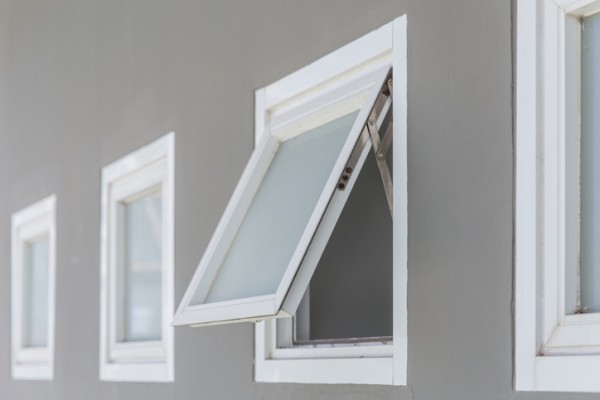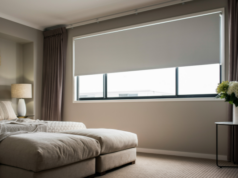
Awning windows are a practical and stylish window option for many Australian homes. Hinged at the top and opening outward from the bottom, they offer excellent ventilation, weather protection and privacy—all in a compact, versatile design.
If you’re building or renovating, especially in areas with limited space or exposure to rain, awning windows are worth considering.
How awning windows work
Awning windows are hinged at the top and typically opened using a winder, crank or push bar at the base. When open, the window sash forms an angled “awning” shape, which gives the window its name. This allows air to flow in while keeping rain and debris out.
They can be installed on their own or stacked in banks for a more architectural look.
Benefits of awning windows
- Weatherproof ventilation: Awning windows can remain open during light rain, making them ideal for areas like kitchens and bathrooms.
- Great for small spaces: Their compact opening style means they’re perfect for tight spots, such as above benches, in bathrooms or alongside walkways.
- Security: Their limited opening angle makes them more secure than many other window types when left open.
- Privacy: Ideal for higher or narrow wall positions where natural light and airflow are needed without compromising privacy.
- Energy efficiency: When paired with double glazing and quality seals, awning windows offer good insulation and air-tightness.
Where to use awning windows in your home
Awning windows are incredibly versatile and can be used throughout the home, especially in:
- Bathrooms and laundries: For ventilation without losing privacy
- Kitchens: Above benches or sinks where space is limited
- Bedrooms: When installed high on walls to maintain privacy while bringing in light and air
- Living areas: In combination with fixed or picture windows for a modern, layered look
They’re also popular in passive solar designs, helping control airflow and reduce reliance on mechanical heating and cooling.
Design and material options
Awning windows are available in a range of frame materials, including:
- Timber: Warm and natural, but requires more maintenance
- Aluminium: Sleek, durable and low-maintenance
- uPVC: Excellent for insulation and weather resistance, with minimal upkeep
Glass choices can also enhance performance, with options like double glazing, Low-E coatings and acoustic glazing to improve comfort and energy efficiency.
Compliance and performance
Awning windows, like all windows in Australian homes, must meet the performance and safety requirements of the National Construction Code (NCC) and relevant Australian Standards, including:
- AS 2047 – Windows and external glazed doors in buildings
- AS 1288 – Glass in buildings – Selection and installation
Window suppliers should provide products rated under the Window Energy Rating Scheme (WERS), which helps you compare energy performance across window types and materials.
Things to consider
- Wind direction and exposure: Ensure the outward-opening sash won’t obstruct walkways or be vulnerable to high wind pressure
- Access: They can be harder to clean from the outside in upper-storey locations
- Winder mechanisms: Choose high-quality hardware that’s durable and easy to operate
Conclusion
Awning windows are a smart choice for homeowners wanting reliable ventilation, good weather resistance and flexibility in window placement. Whether you’re building new or upgrading your existing windows, they can help improve airflow, comfort and energy performance—especially when used strategically in your home’s design.
Talk to your builder or window supplier about the best placement and materials for awning windows to suit your layout, lifestyle and local climate.





